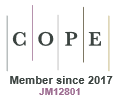Bio-based plastics – a sustainable solution to plastic pollution
Arturo Aburto Medina A * , Soulayma Hassan A , Chaitali Dekiwadia B , Chengrong Chen C D and Andrew S. Ball A DA
B
C
D

Dr Arturo Aburto Medina obtained his PhD from the University of Essex, UK, and has more than 10 years’ experience conducting research and consulting on diverse bioremediation and environmental projects. He has conducted postdoctoral studies at the University of California—Irvine, Flinders University and RMIT University. His research interests include bioremediation of contaminated sites, antimicrobial surfaces, conservation of the environment and indoor air quality. ORCID: https://orcid.org/0000-0002-2871-609X. |

Soulayma Hassan is a PhD candidate at RMIT University, Australia. Her research focuses on the sustainable production of polyhydroxyalkanoates (PHAs) from lignocellulosic biomass, particularly sugarcane bagasse, aiming to develop cost-effective and eco-friendly bioplastics. Her research interests include the circular economy, sustainable resource management and waste valourisation. Soulayma’s research experience also extends to the anaerobic digestion of organic waste, further promoting waste-to-resource technologies. ORCID: https://orcid.org/0009-0009-8839-2611. |

Dr Chaitali Dekiwadia is a platform scientist at RMIT’s Microscopy & Microanalysis Facility. She has conducted postdoctoral studies at The University of Melbourne and Peter MacCallum Cancer Centre. She specialises in life sciences, cryo and X-ray CT, with a passion for advancing research through cutting-edge technology. Her deep knowledge of electron microscopy as a core facility staff for cross discipline collaboration has significantly contributed to produce good research outcomes, fostering technical excellence and enhancing scientific collaboration. ORCID: https://orcid.org/0000-0002-0928-4420. |

Prof. Chengrong Chen is distinguished professor in environmental biogeochemistry and waste recycling at Griffith University and research director of the Solving Plastic Waste CRC. Over the past 30 years, Prof. Chen has worked in the areas of environmental biogeochemistry, with a broad interest in waste recycling, climate change, decarbonation and environmental pollution and sustainability. He has published over 200 peer-reviewed journal papers. ORCID: https://orcid.org/0000-0001-6377-4001. |

Andrew S. Ball is the director of the ARC Training Centre for the Transformation of Australia’s Biosolids Resource, a distinguished professor at RMIT University, Melbourne, and Solving Plastic Waste CRC program leader. He has worked in the areas of soil microbiology, environmental pollution and biogeochemical cycling for 40 years, publishing over 300 peer-reviewed articles. ORCID: https://orcid.org/0000-0003-2387-968X. |
Abstract
Global annual plastic production is >410 × 106 tonnes with an annual rate increase of 4%; most of this plastic is non-biodegradable. Bio-based plastics (also known as bioplastics) are formed from polymers created from renewable or recycled raw materials, making them part of a sustainable plastic life cycle and part of a circular economy. Their production uses carbon-neutral energy and products are recycled at their end of life (EOL). Thus, they stand as an alternative to the current global plastic waste problem (>80% goes to landfill). Bio-based plastics can have a lower carbon footprint than conventional plastics, their materials properties can be advantageous, they are compatible with current recycling streams and biodegradation as EOL is also an option for some. Some challenges include having a larger production of bio-based plastics by gene-edited microorganisms and an improvement in the chemical and biological methods of recycling (upcycling) to process larger volumes and create higher-quality materials. Also, policy is important for the clear identification of bio-based plastics and their acceptance by creating financial incentives for their upscaling.
Keywords: bio-based plastics, biological recycling, carbon-neutral energy, circular economy, PHAs, polyhydroxyalkanoates, polyhydroxylalkanoic acids, renewable sources.
 Dr Arturo Aburto Medina obtained his PhD from the University of Essex, UK, and has more than 10 years’ experience conducting research and consulting on diverse bioremediation and environmental projects. He has conducted postdoctoral studies at the University of California—Irvine, Flinders University and RMIT University. His research interests include bioremediation of contaminated sites, antimicrobial surfaces, conservation of the environment and indoor air quality. ORCID: https://orcid.org/0000-0002-2871-609X. |
 Soulayma Hassan is a PhD candidate at RMIT University, Australia. Her research focuses on the sustainable production of polyhydroxyalkanoates (PHAs) from lignocellulosic biomass, particularly sugarcane bagasse, aiming to develop cost-effective and eco-friendly bioplastics. Her research interests include the circular economy, sustainable resource management and waste valourisation. Soulayma’s research experience also extends to the anaerobic digestion of organic waste, further promoting waste-to-resource technologies. ORCID: https://orcid.org/0009-0009-8839-2611. |
 Dr Chaitali Dekiwadia is a platform scientist at RMIT’s Microscopy & Microanalysis Facility. She has conducted postdoctoral studies at The University of Melbourne and Peter MacCallum Cancer Centre. She specialises in life sciences, cryo and X-ray CT, with a passion for advancing research through cutting-edge technology. Her deep knowledge of electron microscopy as a core facility staff for cross discipline collaboration has significantly contributed to produce good research outcomes, fostering technical excellence and enhancing scientific collaboration. ORCID: https://orcid.org/0000-0002-0928-4420. |
 Prof. Chengrong Chen is distinguished professor in environmental biogeochemistry and waste recycling at Griffith University and research director of the Solving Plastic Waste CRC. Over the past 30 years, Prof. Chen has worked in the areas of environmental biogeochemistry, with a broad interest in waste recycling, climate change, decarbonation and environmental pollution and sustainability. He has published over 200 peer-reviewed journal papers. ORCID: https://orcid.org/0000-0001-6377-4001. |
 Andrew S. Ball is the director of the ARC Training Centre for the Transformation of Australia’s Biosolids Resource, a distinguished professor at RMIT University, Melbourne, and Solving Plastic Waste CRC program leader. He has worked in the areas of soil microbiology, environmental pollution and biogeochemical cycling for 40 years, publishing over 300 peer-reviewed articles. ORCID: https://orcid.org/0000-0003-2387-968X. |
References
1 Plastics Europe (2025) Plastics – the fast Facts 2024. Plastics Europe, Brussels, Belgium. https://plasticseurope.org/knowledge-hub/plastics-the-fast-facts-2024/
2 Chen HL et al. (2021) The plastic waste problem in Malaysia: management, recycling and disposal of local and global plastic waste. SN Appl Sci 3, 437.
| Crossref | Google Scholar |
3 Rosenboom J-G et al. (2022) Bioplastics for a circular economy. Nat Rev Mater 7, 117-137.
| Crossref | Google Scholar | PubMed |
4 Jambeck JR et al. (2015) Plastic waste inputs from land into the ocean. Science 347, 768-771.
| Crossref | Google Scholar | PubMed |
5 Kitt JR (1994) Waste exports to the developing world: a global response. Geo Int’l Envtl L Rev 7, 485.
| Google Scholar |
6 Tan E et al. (2022) A review of plastic and microplastic pollution towards the Malaysian marine environment. IOP Conf Ser Earth Environ Sci 1013, 012012.
| Crossref | Google Scholar |
7 Fauziah SH et al. (2021) Marine debris in Malaysia: a review on the pollution intensity and mitigating measures. Mar Pollut Bull 167, 112258.
| Crossref | Google Scholar | PubMed |
8 World Health Organization (2019) National systems to support drinking-water: sanitation and hygiene: global status report 2019. UN-Water global analysis and assessment of sanitation and drinking-water, GLAAS 2019 report. WHO, Geneva, Switzerland. https://www.unwater.org/sites/default/files/app/uploads/2020/04/UN-Water-Global-Analysis-and-Assessment-of-Sanitation-and-Drinking-Water-GLAAS_2019_eng.pdf
9 Ziccardi LM et al. (2016) Microplastics as vectors for bioaccumulation of hydrophobic organic chemicals in the marine environment: a state-of-the-science review. Environ Toxicol Chem 35, 1667-1676.
| Crossref | Google Scholar | PubMed |
10 Yang CZ et al. (2011) Most plastic products release estrogenic chemicals: a potential health problem that can be solved. Environ Health Perspect 119, 989-996.
| Crossref | Google Scholar | PubMed |
11 Messerli P et al. (2019) The future is now – science for achieving sustainable development. Global sustainable development report 2019. United Nations, New York, NY, USA. https://sustainabledevelopment.un.org/content/documents/24797GSDR_report_2019.pdf
12 Ma ZF et al. (2020) Microplastic pollution and health and relevance to the Malaysia’s roadmap to zero single-use plastics 2018–2030. Malays J Med Sci 27, 1-6.
| Crossref | Google Scholar | PubMed |
13 Plastics Europe (2025) Plastics – the Facts 2022. Plastics Europe, Brussels, Belgium. https://plasticseurope.org/knowledge-hub/plastics-the-facts-2022/
14 Tournier V et al. (2020) An engineered PET depolymerase to break down and recycle plastic bottles. Nature 580, 216-219.
| Crossref | Google Scholar | PubMed |
15 Wu Z et al. (2023) Biodegradation of conventional plastics: candidate organisms and potential mechanisms. Sci Total Environ 885, 163908.
| Crossref | Google Scholar |
16 Zheng J, Suh S (2019) Strategies to reduce the global carbon footprint of plastics. Nat Clim Chang 9, 374-378.
| Crossref | Google Scholar |
17 Hassan S et al. (2024) Valorisation of sugarcane bagasse for the sustainable production of polyhydroxyalkanoates. Sustainability 16, 2200.
| Crossref | Google Scholar |
18 Questell-Santiago YM et al. (2020) Stabilization strategies in biomass depolymerization using chemical functionalization. Nat Rev Chem 4, 311-330.
| Crossref | Google Scholar | PubMed |
19 Kikken N (2024) CSIRO report reveals the state of bioplastics in Australia. News Release, 5 December 2024. CSIRO.https://www.csiro.au/en/news/all/news/2024/december/csiro-report-reveals-the-state-of-bioplastics-in-australia
20 Madhumathi R et al. (2016) Optimization of polyhydroxybutyrate production by Bacillus safensis EBT1. Clean – Soil, Air, Water 44, 1066-1074.
| Crossref | Google Scholar |
21 Berezina N (2013) Novel approach for productivity enhancement of polyhydroxyalkanoates (PHA) production by Cupriavidus necator DSM 545. N Biotechnol 30, 192-195.
| Crossref | Google Scholar | PubMed |
22 Koller M, Rittmann SKMR (2022) Haloarchaea as emerging big players in future polyhydroxyalkanoate bioproduction: review of trends and perspectives. Curr Res Biotechnol 4, 377-391.
| Crossref | Google Scholar |
23 Salgaonkar BB, Bragança JM (2015) Biosynthesis of poly(3-hydroxybutyrate-co-3-hydroxyvalerate) by Halogeometricum borinquense strain E3. Int J Biol Macromol 78, 339-346.
| Crossref | Google Scholar | PubMed |
24 Medeiros Garcia Alcântara J et al. (2020) Current trends in the production of biodegradable bioplastics: the case of polyhydroxyalkanoates. Biotechnol Adv 42, 107582.
| Crossref | Google Scholar | PubMed |
25 Hann S et al. (2020) Biobased and biodegradable plastics in Denmark. Ind Biotechnol 16, 164-175.
| Crossref | Google Scholar |
26 Li D et al. (2017) Controlling microbial PHB synthesis via CRISPRi. Appl Microbiol Biotechnol 101, 5861-5867.
| Crossref | Google Scholar | PubMed |
27 Vu DH et al. (2020) Recycling strategies for polyhydroxyalkanoate-based waste materials: an overview. Bioresour Technol 298, 122393.
| Crossref | Google Scholar | PubMed |
28 Salinas J et al. (2025) Construction of versatile plastic-degrading microbial consortia based on ligninolytic microorganisms associated with agricultural waste composting. Environ Pollut 366, 125333.
| Crossref | Google Scholar | PubMed |
29 Yoshida S et al. (2016) A bacterium that degrades and assimilates poly(ethylene terephthalate). Science 351, 1196-1199.
| Crossref | Google Scholar | PubMed |
30 Lambert S, Wagner M (2017) Environmental performance of bio-based and biodegradable plastics: the road ahead. Chem Soc Rev 46, 6855-6871.
| Crossref | Google Scholar | PubMed |
31 Hong M, Chen EYX (2017) Chemically recyclable polymers: a circular economy approach to sustainability. Green Chem 19, 3692-3706.
| Crossref | Google Scholar |
32 Geyer R et al. (2017) Production, use, and fate of all plastics ever made. Sci Adv 3, e1700782.
| Crossref | Google Scholar | PubMed |
33 Anuar Sharuddin SD et al. (2016) A review on pyrolysis of plastic wastes. Energy Convers Manag 115, 308-326.
| Crossref | Google Scholar |
34 Weinberger S et al. (2017) Enzymatic degradation of poly(ethylene 2,5-furanoate) powders and amorphous films. Catalysts 7, 318.
| Crossref | Google Scholar |
35 De Smet M (2016) The new plastics economy ‒ rethinking the future of plastics. In European Conference on Plastics in Freshwater Environments (Reifferscheid G et al., eds), 21–22 June 2016, Berlin, Germany. Abstract, pp. 51–54. Umweltbundesamt, Dessau-Roßlau, Germany. https://www.umweltbundesamt.de/sites/default/files/medien/1410/publikationen/2017-03-21_doku_08-2016_plastic-conference-abstracts_0.pdf
36 Nelles M et al. (2016) Waste management in Germany – development to a sustainable circular economy? Procedia Environ Sci 35, 6-14.
| Crossref | Google Scholar |
37 Moshood T et al. (2021) Expanding policy for biodegradable plastic products and market dynamics of bio-based plastics: challenges and opportunities. Sustainability 13(11), 6170.
| Crossref | Google Scholar |


